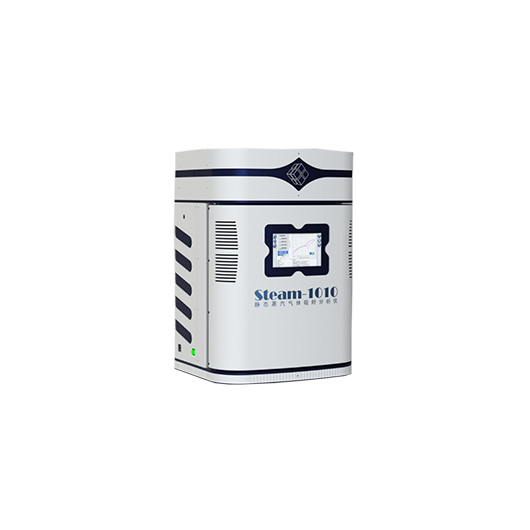氣溶膠吸附法主要采用毛細聚結現象和體積等效替代原理�,在假定孔體為圓柱形管狀的前提下�,建立毛細聚結模型�,從而估算巖石孔徑分布特征和孔徑體積����。
測定了在不同壓力條件下(壓強P與飽和壓P0)樣品的凝結氣量����,繪制了等溫吸附和脫附曲線(xiàn)�����,用不同的理論方法可以得到孔徑和孔徑分布曲線(xiàn)�����。
根據孔徑測量范圍的不同�����,氣體吸附法可分為氮氣吸附法和二氧化碳吸附法��,前者主要用于2~50nm的中孔檢測�����,而后者則主要用于100nm以下的微孔檢測�,因為在實(shí)驗條件下��,二氧化碳的擴散速度較慢���,更容易達到飽和吸附�����,因此���,主要用于2nm以下的微孔結構檢測����。
根據不同的研究目的���,設計了兩組泥頁(yè)巖孔隙結構試驗����,一組用氮氣吸附法對隊長(cháng)7和長(cháng)9共14個(gè)全巖樣進(jìn)行了全孔結構試驗���,并與泥頁(yè)巖礦物成分分析���、熱解和吸附能力試驗等相結合��。
主要測試了中孔-大孔(1.74~300nm)的微孔比表面和孔結構參數�����。另外一組樣品還與壓汞試驗相配合�,從頁(yè)巖中分離出粉砂巖紋層�����,將粉砂質(zhì)紋層和頁(yè)巖壓碎成粒度小于250微米的巖石粉末���,并在80℃溫度下烘干和脫氣�,然后分別用氮氣吸附法和二氧化碳吸附法對粉砂巖紋層和純頁(yè)巖層進(jìn)行孔隙結構試驗��。

吸氮方法主要測定中孔-大孔(3.0~109.8nm)的比表面積和孔徑分布特點(diǎn)���;吸二氧化碳方法主要測定微孔(0.3~1.5nm)的比表面積和孔徑分布特點(diǎn)�。本試驗由北京市物理化學(xué)分析測試進(jìn)行�����,使用美國康塔公司研制的比表面積與孔隙度分析儀���。
根據國家標準GB/T21650.1-2008對氮氣和二氧化碳進(jìn)行等溫吸附與脫附曲線(xiàn)測試與分析����。用氦氣置換法真密度儀對孔徑分布進(jìn)行了特征性的定量研究���,并對孔隙度進(jìn)行了測試���。同時(shí)進(jìn)行了巖石框架密度的測定�����。
頁(yè)巖氣吸附氣的原始吸附和脫附數據分析中����,比表面積和孔徑分布解釋需要選擇合適的理淪模型���。當前較為成熟的中孔比表面積分析模型是多點(diǎn)BET吸附比表面積解釋模型����,通過(guò)建立吸附容量V與單層飽和吸附量Vm之間的關(guān)系��,分析單層P/P0在0.05~0.35范圍內的比表面積���。
但由于單層吸附在微孔中的發(fā)生頻率較高���,采用單層吸附法推出的朗默爾比表面積值更適合��。中孔表面積采用了BET吸附模型����,而微孔表面積采用了Langmuier比表面積解釋模型����。
對吸氮試驗的孔徑分布結果�����,用中孔分析中常用的BJH孔徑分布計算模型進(jìn)行了解釋?zhuān)蠢肒elvin方程建立相對壓力與孔徑的關(guān)系���。理論和實(shí)踐證明����,用吸附曲線(xiàn)解釋吸附試驗孔徑分布是可行的�����,并通過(guò)對各試樣的分析表明��,該方法能有效地解決吸附曲線(xiàn)解釋中的孔徑分布問(wèn)題��,且在4nm時(shí)解釋結果出現了異常峰���,該峰不是其真實(shí)內部結構的反映��,而是受大孔�、中孔����、微孔并存的復合孔隙網(wǎng)絡(luò )系統的影響�����,利用吸附曲線(xiàn)建立的孔徑分布模型可以消除這種假象����,提高解釋精度��。

